When you dive into the world of audio connections, some of it is challenging to understand. There are several different types of audio connectors to know about.
There are various types of connections that go into every signal chain, which can be confusing. This might lead you to wonder what the real differences are between audio inputs and audio outputs – and why this distinction matters.
Audio input vs. audio input is simple to understand. An input is a source of an audio signal that introduces audio into a signal chain or audio system, while outputs send sound out into another device or project audio out as sound. An input can be an instrument, and an output can be a speaker.
Audio output and inputs are very different, and understanding what makes them different is critical for all signal chains. There are several reasons why this distinction is important, but not everyone who deals with audio signals understands them well.
Let’s compare audio outputs and inputs to better understand them and use signal chains more effectively.
What Is The Difference Between Audio Output And Input?
Audio signals and signal directions can be difficult to understand, but knowing the differences between output and input is critical.
If you are unsure what your input sources are versus your output sources and how to connect them and send the signal between devices or channels, your signal chain will not work.
This is true for hardware signal chains, analog signal chains, and even digital audio signal chains. The difference between audio input and output is relatively simple to understand.
Audio output is a device, connector, or end-point in a signal chain that projects the audio signal or sends it out to another device or link in the signal chain.
Audio input is a signal source. This could be the original source of the audio, such as an instrument or microphone. An audio input could be a tone that is digitally generated, or it could be a connection between two devices in a signal chain that sends the signal out (rather than receiving the signal).

Inputs send signal, and outputs receive signal. Output and inputs can occur at multiple points in a signal chain, or they can be as simple as plugging an audio device into a speaker, in which case there is only one audio output and one audio input in the signal chain.
However, the distinctions between output and inputs in audio can become very complex if you zoom in to the smallest aspects of the chain, as there are multiple small connections even in the simplest chain.
The table below gives a brief summary.
| Input | Output |
|---|---|
| Audio Signal Source | Projects Audio Signal |
| Sender | Receiver |
| Example: Instrument | Example: Speaker |
Understanding outputs and inputs are critical, so let’s continue to dive deeper into these distinctions to better understand them.
Does This Distinction Really Matter?
We have established that audio inputs receive an audio signal while outputs send out an audio signal, but does this distinction really matter in the audio world? Are the connections between signal conduits in audio really important, or are they simply the connectors that are orientated differently?
The truth is that the distinction between output and input in audio is critical. If a signal is sent from one output into another output, the signal chain will not flow, and the signal will not make it through the connection.

This could even cause serious hardware malfunction and irreparable damages to equipment in certain circumstances.
Audio outputs and inputs are technically the same things on a hardware level, but the way the connection is configured determines if it receives or sends signal. If these connectors are placed in the wrong position in a signal chain, the signal will not move through the chain at all.
Every audio signal must follow some form of the signal chain, regardless of how basic the signal chain is. If the inputs and outputs in the chain are not placed correctly, the chain will not function, and the audio signal will not work.
Audio Output Vs. Audio Input In Signal Chains
Now that we have established the distinctions and importance of outputs and inputs in audio let’s briefly discuss the importance of these functions within an audio signal chain.
An audio signal chain relies entirely on inputs and outputs, and this is how the signal travels from one link in the chain to the next.

If an audio signal is being transmitted from an instrument on a live stage to the front-of-house speakers as well as to a recording setup, the chain can be very complex and relies directly on the outputs and inputs being in the right places and orientations in the chain.
For example, a bass guitar on a stage is a signal source, which is an input. That input is sent into a DI box (Direct Input box) on stage, which then sends the signal out from the DI into an input on the stage box, which sends the signal out to the mixer, where it is plugged into an input.
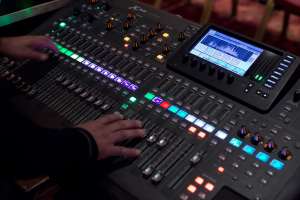
The mixer then processes the audio signal and sends it out to the recording setup and out to the output stage box. The stage box receives the signal as an input and sends the signal as an output to the front-of-house speakers and monitors, which receive the signal as an input and project it to the room as an output.
The recording setup simultaneously receives the signal as an input from the mixer and is then able to process and record the audio signal before sending it out to an audio source such as speakers or headphones, which receive the signal as an input and project it as an output.
If any of the inputs and outputs in this signal chain are not configured or placed correctly, the next element in the signal chain will not function as it will not receive or output any signal.
This means that outputs and inputs are the most important function within signal chains, and without these simple connections, no audio signal would work at all.
Audio Output vs. Audio Input In Recording & Capture
Another area where audio output and input can be a source of confusion is in the recording and capture space, as understanding where signals should be sent internally while recording or capturing audio can be challenging to understand.
In this area of audio, it is important to remember that outputs and inputs function in the same way digitally as they do mechanically or in an analog audio system.
Within your digital chain of effects, inputs, processing, and capture, the signal that you are working with must always flow from an input to an output throughout the chain.
If a signal comes from an output, it will not send it to the next step in the system. If the signal is sent through an input, it will fail in the same way.
If you are processing and capturing audio digitally through multiple digital effect arrays and systems, always be sure to mark the correct ends of the digital links to the correct input-output orientation, or the signal will always fail.
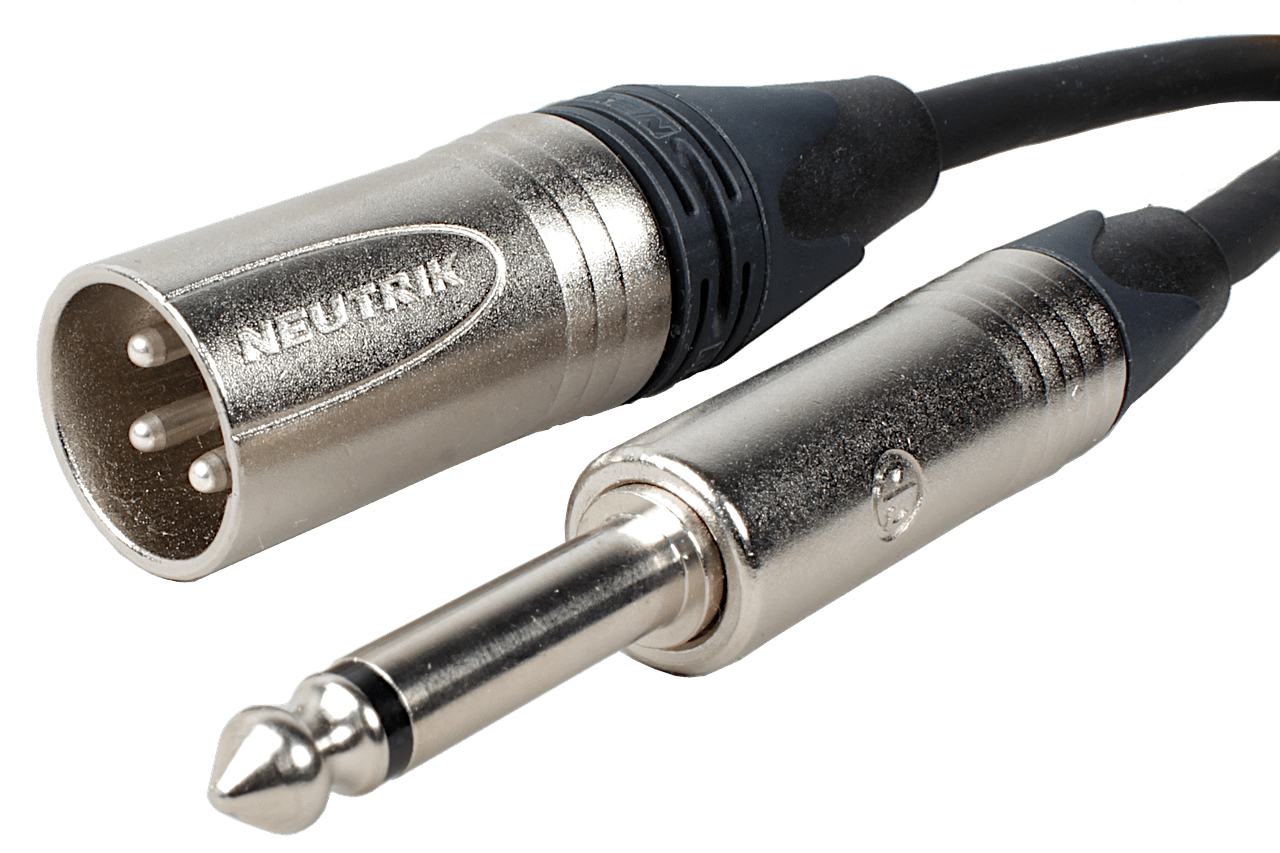
This is true for all DAW software, recording input and processing software such as OBS, and even for mastering and mixing audio in effects processors.
Inputs must always lead to output, and outputs can never be sent to another output. Always remember to think of signal flow in the same way as a flow of water in a river – there must always be a way for a water source to flow from one direction to an output, or the river will stop flowing.
Examples Of Audio Input Devices
Output and input are critical distinctions in audio, and it is important to understand and identify both of these functions, but it is also good to understand what devices are examples of each to better understand the functions of input and output in audio chains.
For this reason, here are some examples of common audio input devices and what makes them an input devices.
Musical Instruments
Musical instruments are the easiest devices to demonstrate audio inputs.
Instruments generate their own sound and require no audio input to send a signal, as any audio that comes from the instrument is generated independently from the audio chain.
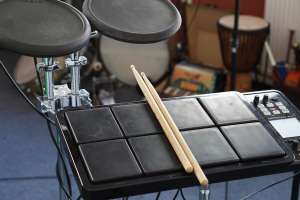
This audio signal is then input into the audio system to be output somewhere else. Musical instruments rarely have inputs themselves but always have outputs, as they are the source of the input.
Microphones
Microphones are another example of an input device, as they always put signal into an audio system.
Microphones are not usually the source of sound, but they are always an input source into an audio system. Microphones cannot output audio; they can only receive it, which inherently makes microphones input devices.

A microphone will always introduce audio into a signal chain and never receive it.
Sound Sources
While microphones do not generate sound but always introduce sound into an audio system, sound sources can only be inputs, as they never receive the audio signal.
Examples of this can be a human voice, an audio device that is playing music or sounds, such as a computer or an audio player, and other direct sources of sound.
These devices are always inputs within an audio system.
Sound Generation Software
Sound generation software, such as the software used to create digital music, can also be considered an audio input, as it can be the original source of the sound or audio signal that is introduced into a single chain.
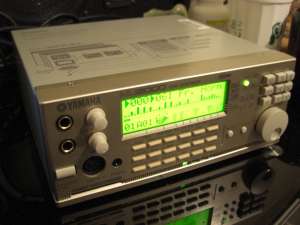
In this way, sound generation software can be considered an audio input in the same way as musical instruments and microphones are.
Examples Of Audio Output Devices
Audio always has a source, input, and output. Outputs are not usually as difficult to identify as inputs, but it is still good to identify some examples of audio outputs.
Some examples of audio outputs include:
Speakers
Speakers are the most obvious and simple-to-understand form of audio output.
Speakers always output sound that is sent into them through a signal chain. Speakers are never input devices, as they are designed only to send sound out as a projection into the air.
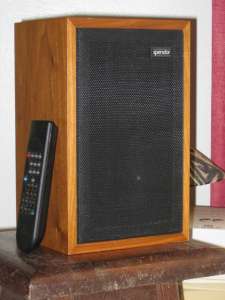
Signal is always sent into speakers, and speakers always output audio as sound, never the other way around.
Headphones
Headphones are another good example of an audio output device, as they function in precisely the same way as external speakers. Headphones are a way to output audio signals as sound that can be heard by the human ear.

Headphones are never audio inputs, as they do not generate or transmit sound or audio signals through a chain and are always a source of output for the signal that is sent along the chain.
Amplifiers
Amplifiers used for musical instruments also form an audio output, as they receive signal from the instrument or signal chain, run the signal through an amplifier, and send it out through a speaker to be heard by human ears.

This is a good example of an output device, as it always receives signal and outputs it and never generates sound independently to be input into a system.
Interfaces
Audio interfaces are an example of an audio output device, but they can be considered an input device as well, depending on where you look in the signal chain.
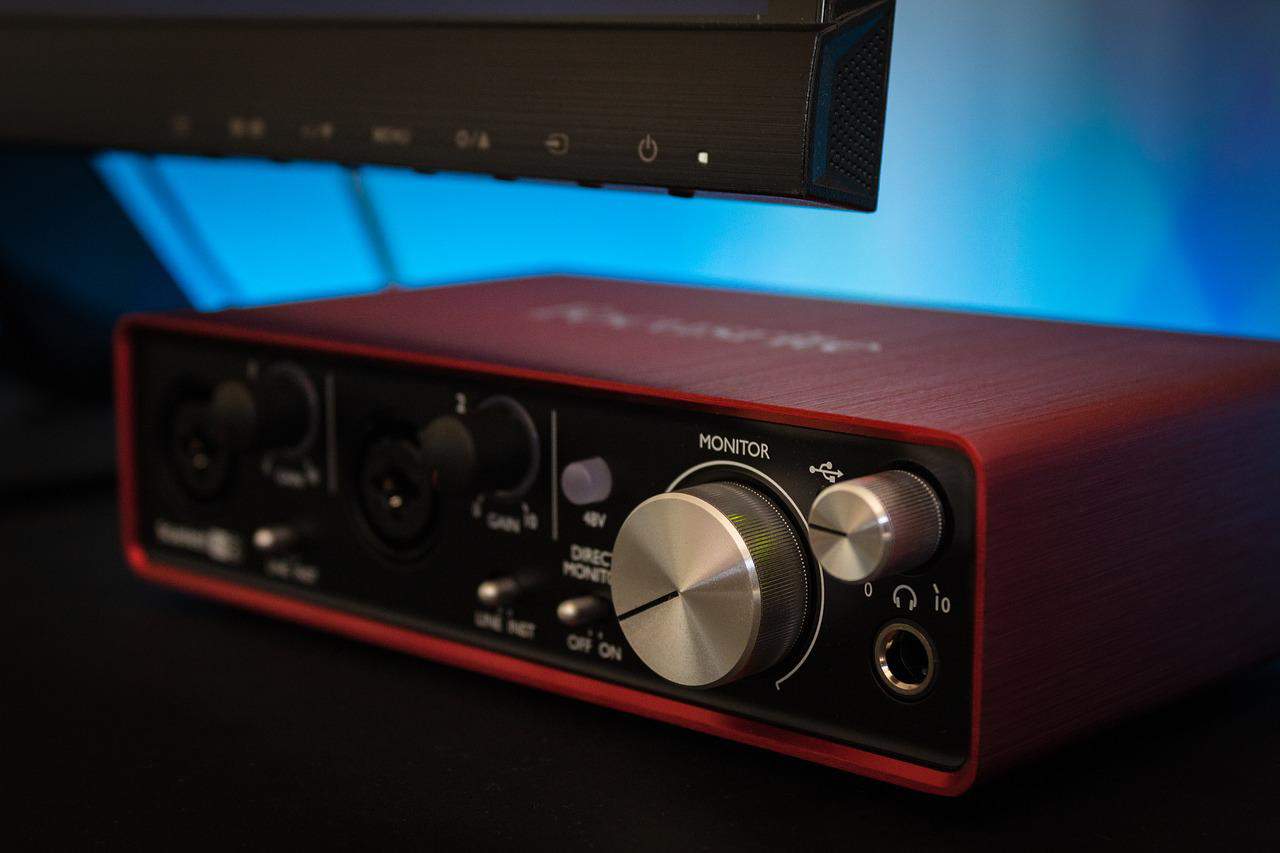
However, audio interfaces are usually where an audio signal is terminated and converted into a digital signal and is therefore considered to be an audio output and a digital input.
Audio interfaces receive an audio signal from an instrument or audio signal chain and output the audio as a digital signal.
Output Connectors
Output connectors are another good example of audio outputs, as these connectors are designed to send signals out rather than to receive signals.
Any audio device that has a connector marked ‘output’ is always able to send signal from the device into something else in the chain.
These devices usually have an input at one end and an output at the other but are considered to be output connections because the signal chain does not end at this device.
Conclusion
At the end of it, understanding audio inputs and outputs is simple when you think in terms of signal flow. Signal chains always flow from one device to another and therefore require both inputs and outputs to function.
If audio inputs and outputs are not placed in the right places or the right orientation within a signal chain, the audio will not flow from the input source to the output source, and the chain will fail and be non-functional until the flow is restored.
